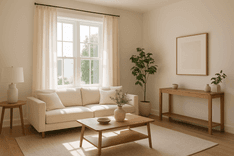Should Sidelights Match the Front Door? The Design Rule That’s Evolving in Modern Homes
For decades, homeowners followed one unspoken rule: your sidelights should always match your front door. But today’s design world is shifting. Architects and homeowners alike are rethinking symmetry, contrast, and curb appeal — questioning whether perfect matching is truly necessary. As design becomes more personalized and expressive, the front entryway has become a statement piece, not just an entrance. Let’s explore why this once-rigid rule is changing, and what it means for modern home design.
The History Behind Matching Sidelights and Doors
The tradition of matching sidelights and doors stems from classical architecture. Early American and Colonial styles favored uniformity — every element, from trim to window grids, had to feel cohesive. Matching sidelights visually extended the door, emphasizing balance and formality.
However, as mid-century and contemporary design philosophies took root, uniformity began to give way to intentional contrast. Designers started treating sidelights as complementary accents rather than mirror images. This shift wasn’t just aesthetic — it reflected a deeper cultural trend toward personalization and expression in home design.
Form vs. Function: What Sidelights Actually Do
Sidelights serve two core purposes:
Function: They allow natural light into the entryway without compromising privacy or security.
Form: They frame the front door, influencing balance, proportion, and overall curb appeal.
When both goals are considered, matching may not always be the best design choice. For example, darker door colors often pair beautifully with frosted or contrasting sidelights, creating depth and visual focus. Meanwhile, minimalist homes might prefer sleek glass panels to highlight the clean geometry of the doorway — even if they differ in tone or finish.
The Rise of Contrast Design
Modern design embraces contrast — not chaos. Instead of strict uniformity, designers now talk about complementary harmony.
Here are a few trending approaches:
Black Door + Frosted Glass Sidelights: Creates a high-contrast, modern look with privacy and sophistication.
Natural Wood Door + Matte Black Frames: Warmth meets industrial style — perfect for contemporary exteriors.
Painted Door + Clear Sidelights: Adds personality while keeping light flow consistent.
Dual-Tone Themes: Using the door as a statement color while the sidelights remain neutral or metallic.
This movement toward contrast allows homeowners to express individuality while maintaining visual balance. The result? Entryways that feel intentional, inviting, and unique — rather than cookie-cutter.
Material Matters: Choosing Finishes Wisely
Material choice plays a major role in how well sidelights and doors work together.
Wood: Offers natural variation, so even a matching finish can look subtly different depending on grain and tone.
Fiberglass or Steel: Easier to color-match, but can also support bold contrasting finishes.
Glass: Comes in countless options — clear, textured, frosted, or tinted — allowing light control and aesthetic customization.
For timeless appeal, designers suggest aligning texture and tone more than exact color. For instance, a walnut door with bronze-accented sidelights feels unified even without perfect color matching.
Architectural Style Considerations
Matching or contrasting sidelights should also align with your home’s architectural character:
Traditional Homes: Often benefit from matching sidelights and doors for a cohesive, symmetrical look.
Modern or Mid-Century Homes: Typically use contrast — glass or metal frames paired with painted or stained doors.
Cottage or Craftsman Styles: Use natural tones, with sidelights that echo trim or accent colors instead of directly matching the door.
Transitional Designs: Blend both worlds — matching shapes and lines, but mixing finishes or textures for depth.
Understanding your home’s architectural DNA helps prevent mismatched choices that feel accidental instead of intentional.
Lighting, Privacy, and Energy Efficiency
Beyond appearance, sidelights impact how your entryway feels and functions throughout the day.
Natural Light: Glass sidelights brighten foyers and hallways but may require frosted or tinted finishes for privacy.
Privacy Films: Allow for visual harmony without sacrificing discretion.
Energy Considerations: Modern sidelights can include insulated or low-E glass, improving efficiency — an essential factor for today’s eco-conscious homeowners.
The decision to match or contrast should consider how light interacts with both the door and the interior. For example, a dark-stained door with clear sidelights may overexpose an entryway during midday, while frosted glass balances brightness.
Color Psychology and Entryway Mood
Color choice at your entryway subconsciously affects how guests perceive your home:
Matching tones create calm, classic harmony.
Contrasting colors express creativity, confidence, and modern flair.
If you love timeless curb appeal, align colors. If you value personality and trend-forward design, contrast can be your best friend. The key is cohesion — ensuring your entryway feels purposeful, not pieced together.


